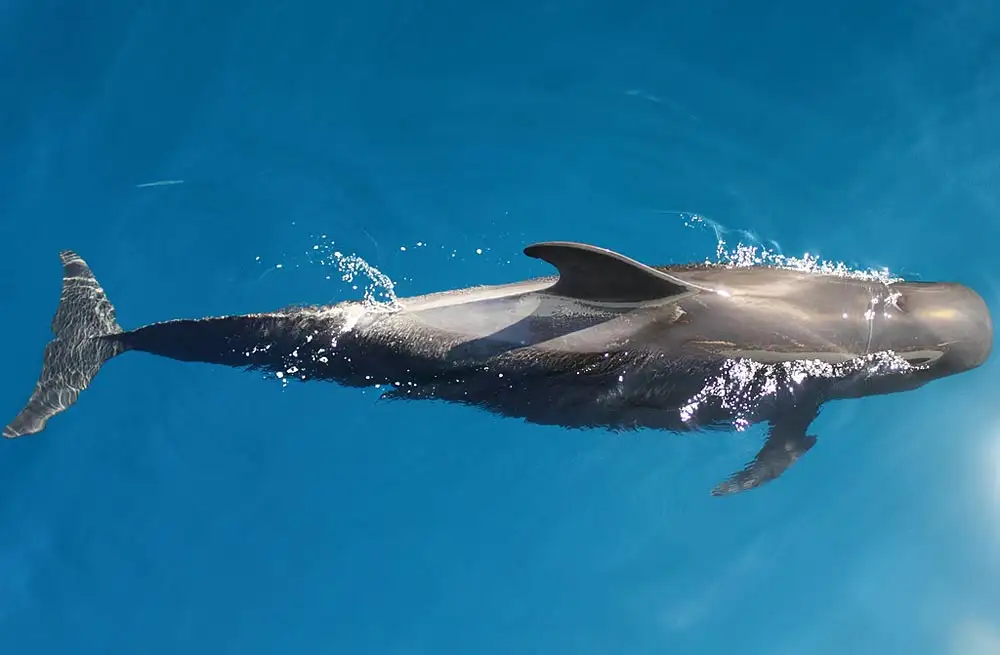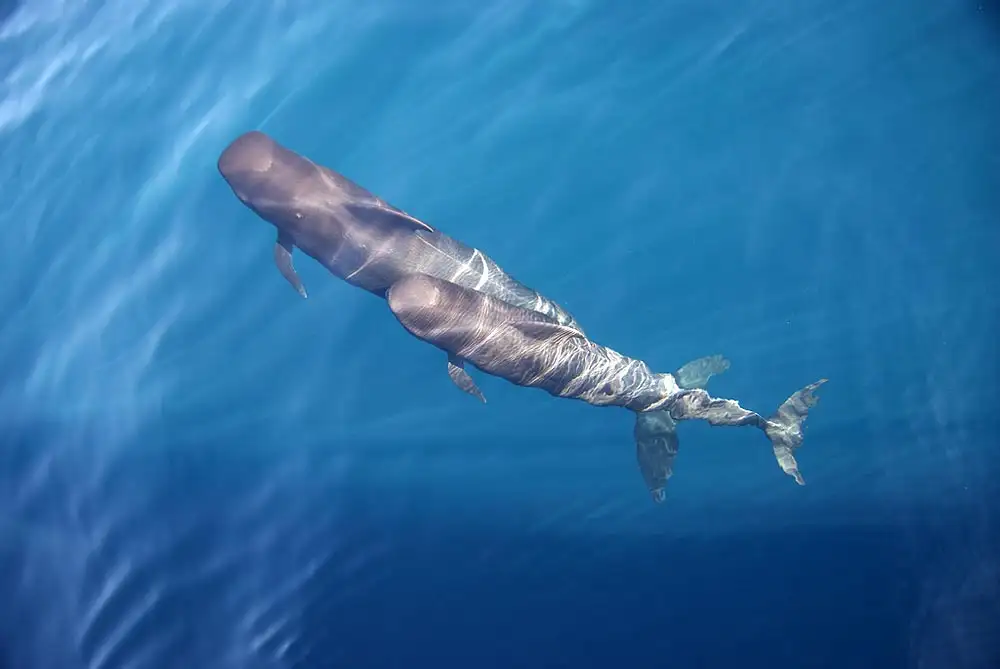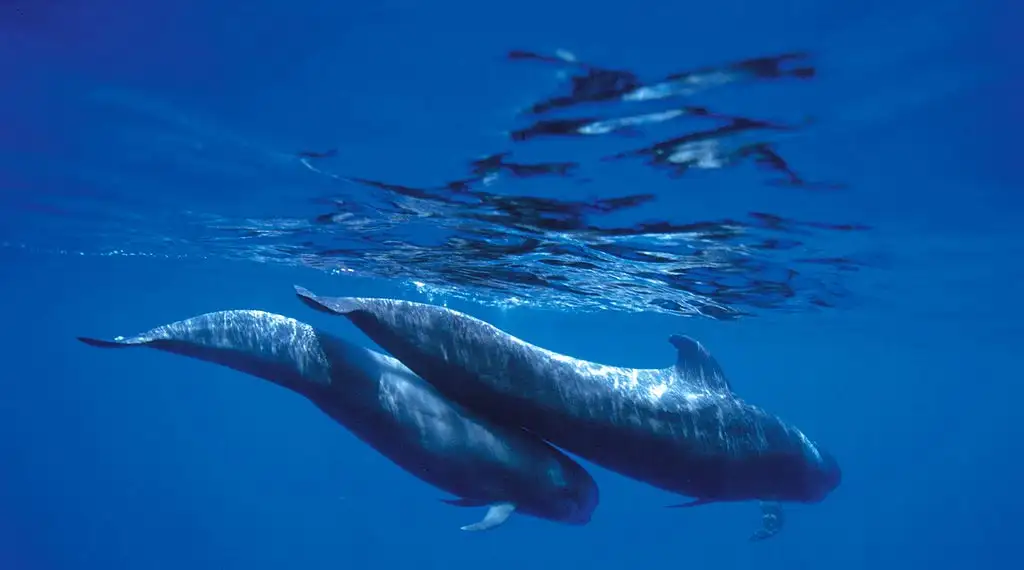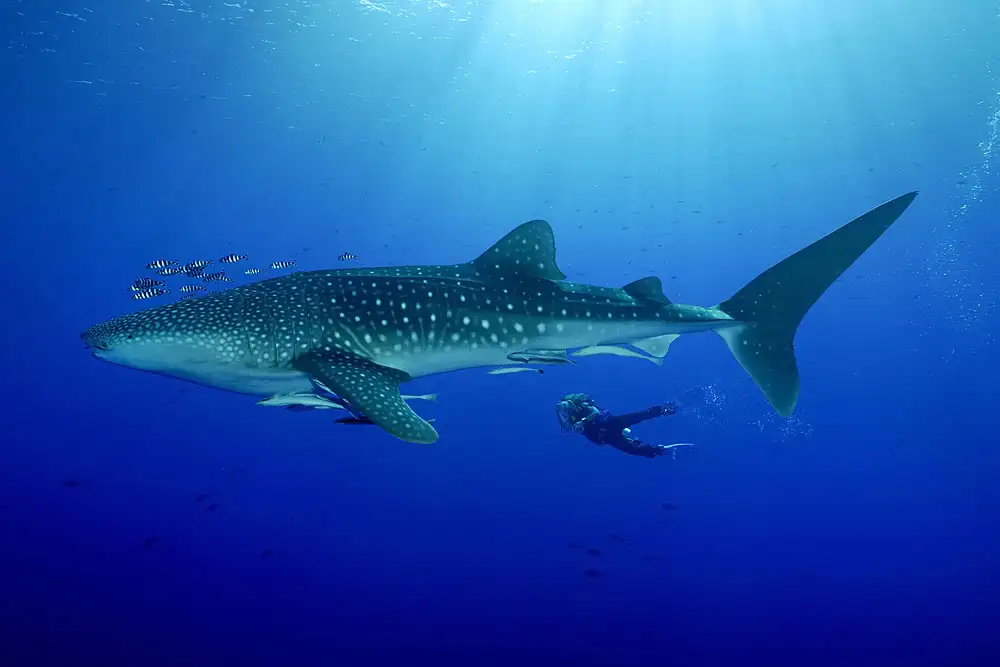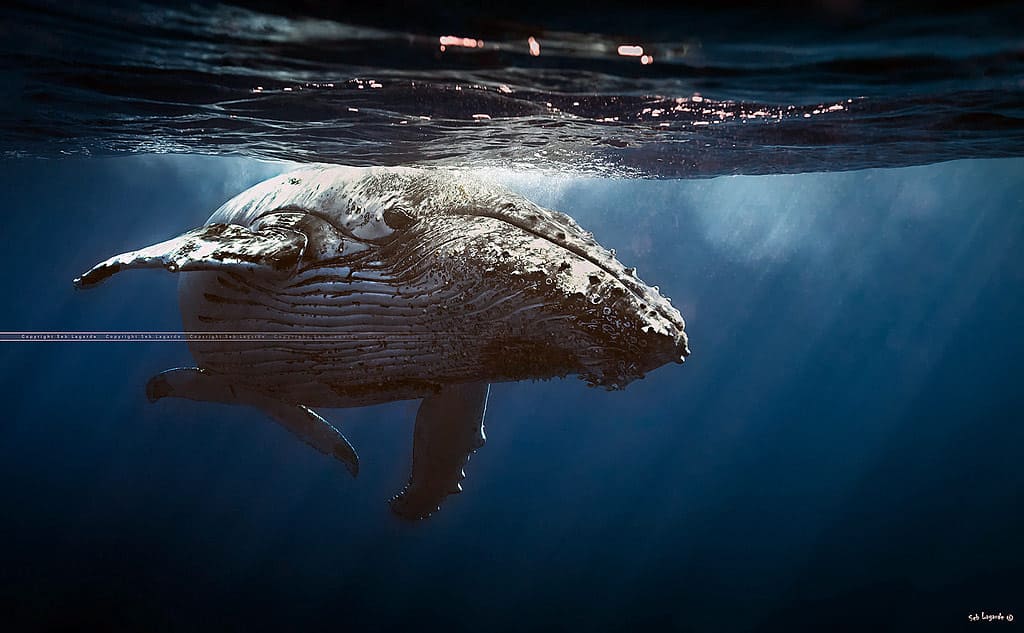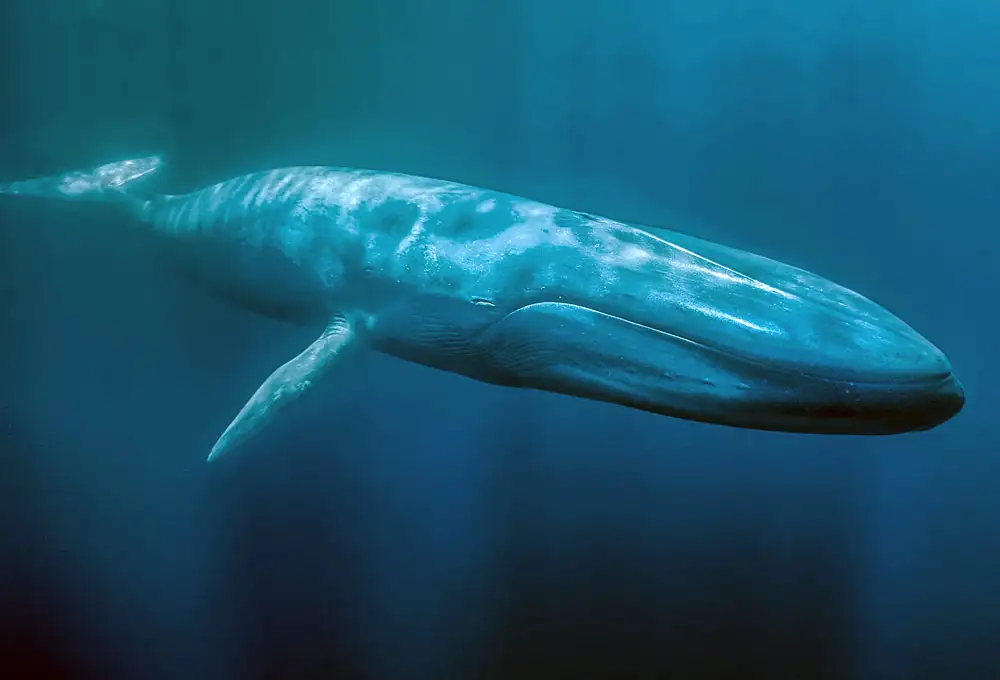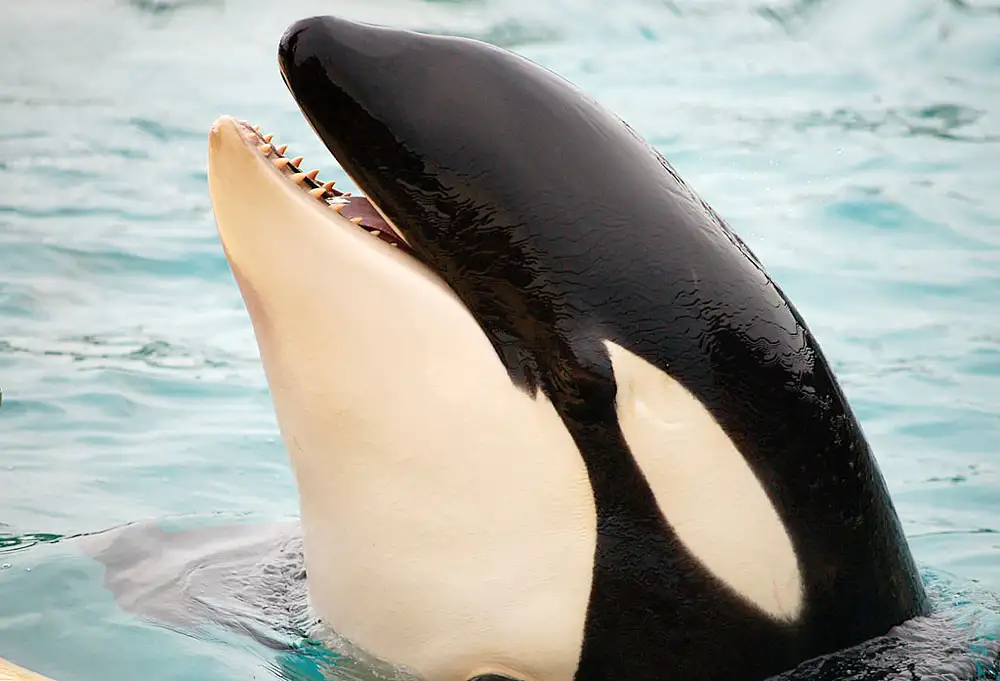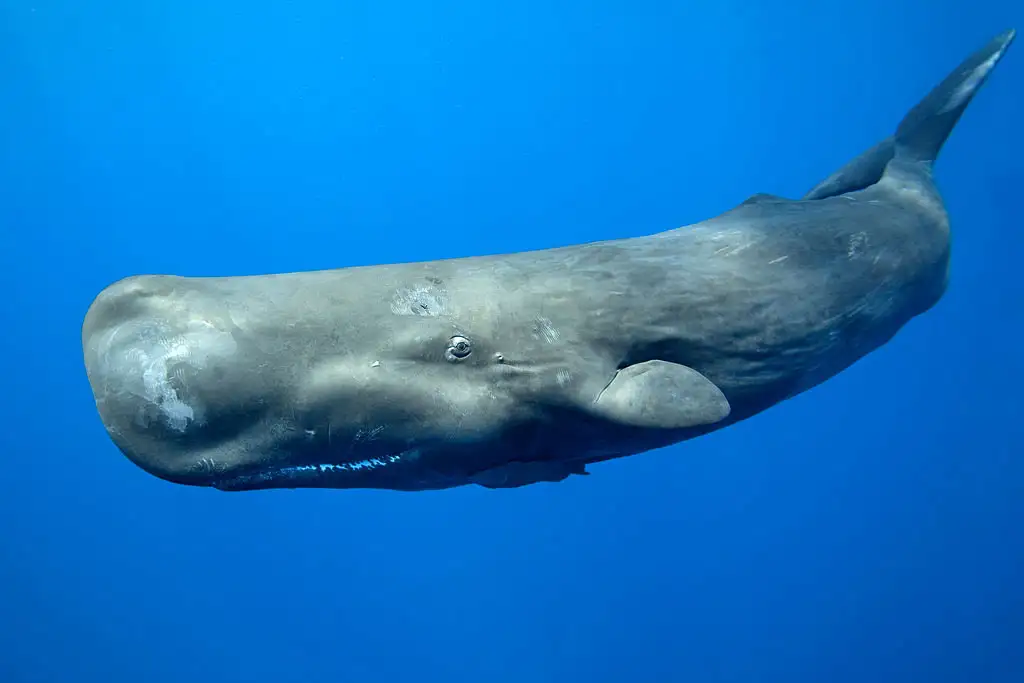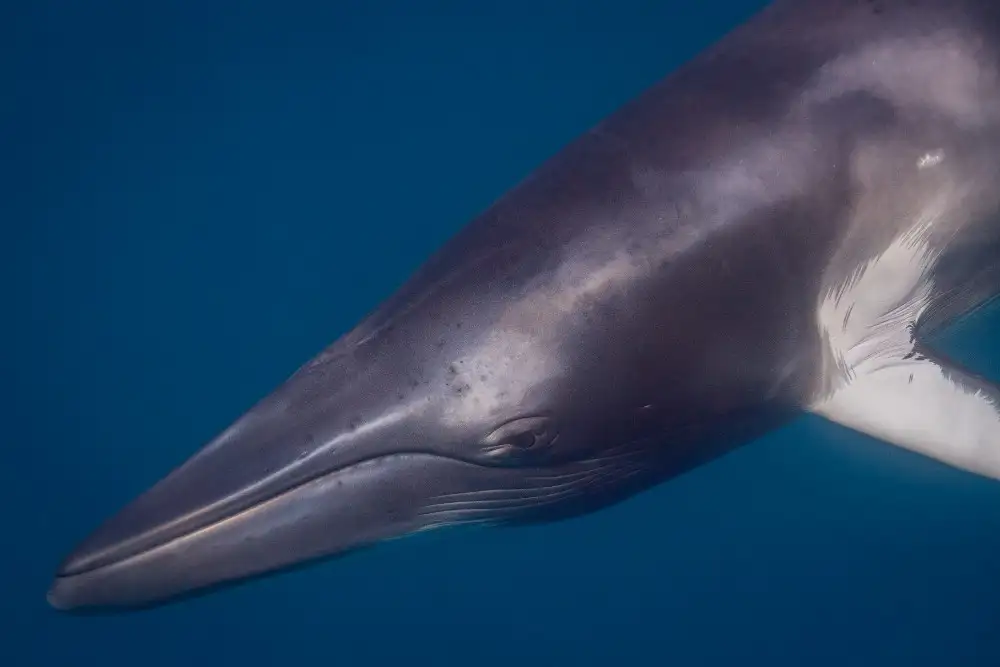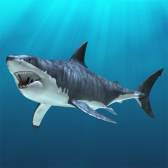Pilot Whales
IUCN
Not evaluatedBasic Information
Scientific classification
- name:Pilot Whales
- Scientific Name:Globicephala (genus)
- Outline:Giant Fish
- Family:Delphinidae Globicephala
Vital signs
- length:3.5–7.5 m (species/sex dependent)
- Weight:1–3.5 t
- lifetime:c. 45–60 years (population‑specific)
Feature
Highly social deep‑diving squid hunters; matrilineal pods; strong cohesion; occasional mass strandings.
Distribution and Habitat
Outer shelf/slope, seamounts and fronts in temperate to tropical oceans; species differ strongly in latitude.
Appearance
Bulbous head, very short rostrum; falcate forward‑set dorsal fin; dark grey‑black with pale saddle; long vs short pectorals by species.
Details
Globicephala—the pilot whales—is a genus in the family Delphinidae with two living species: the Long‑finned Pilot Whale (G. melas) and the Short‑finned Pilot Whale (G. macrorhynchus). Both are highly social, deep‑diving squid predators with rounded foreheads (large melons) and falcate, forward‑set dorsal fins. They travel in matrilineal pods and sometimes share feeding grounds with sperm whales.
Ecology & Behaviour
Diet is dominated by squid with fishes taken opportunistically. They frequent continental‑shelf breaks, seamounts and frontal systems, using sophisticated social/vocal coordination and alloparental care (calf “escorts”). Strong cohesion can lead to occasional mass strandings.
Identification
Length ~3.5–7.5 m, mass ~1–3.5 t. Bulbous head with very short rostrum; falcate dorsal fin about one‑third body length from the snout. Dark grey to black with a pale “saddle” behind the dorsal fin; G. melas has longer pectorals, while G. macrorhynchus shows shorter pectorals and a taller, more triangular fin.
Range & Species
G. melas (Long‑finned): North Atlantic and temperate–subpolar Southern Hemisphere; cooler‑water specialist.
G. macrorhynchus (Short‑finned): Widespread in tropical–subtropical oceans worldwide.
Threats & Conservation
Bycatch/entanglement in longlines and gillnets.
Noise & sonar affecting communication/navigation; ship strikes locally.
Drive hunts/harvests in a few areas, managed under local regulations and international scrutiny.
Pollutants & prey shifts (POPs, biotoxins, climate variability).
Priorities: gear modifications and observer programs, dynamic protection of key seamount/front habitats, quieter‑ship initiatives and speed management, and robust stranding‑response networks.
FAQ
Q1. How to tell long‑finned from short‑finned?
G. melas has longer flippers and occupies cooler waters; G. macrorhynchus has shorter flippers and favors tropical/subtropical seas with a taller dorsal fin.
Q2. Why do mass strandings occur?
Strong social cohesion, gently sloping bays and acoustic/navigation issues can combine to cause group strandings.
Q3. Nearshore presence?
Typically offshore/outer‑shelf, but they approach coasts near seamounts, canyons and frontal zones.
Q4. What is the conservation status?
This is a genus overview (not evaluated as a whole). IUCN categories differ by species (often LC/NT); see species pages.

